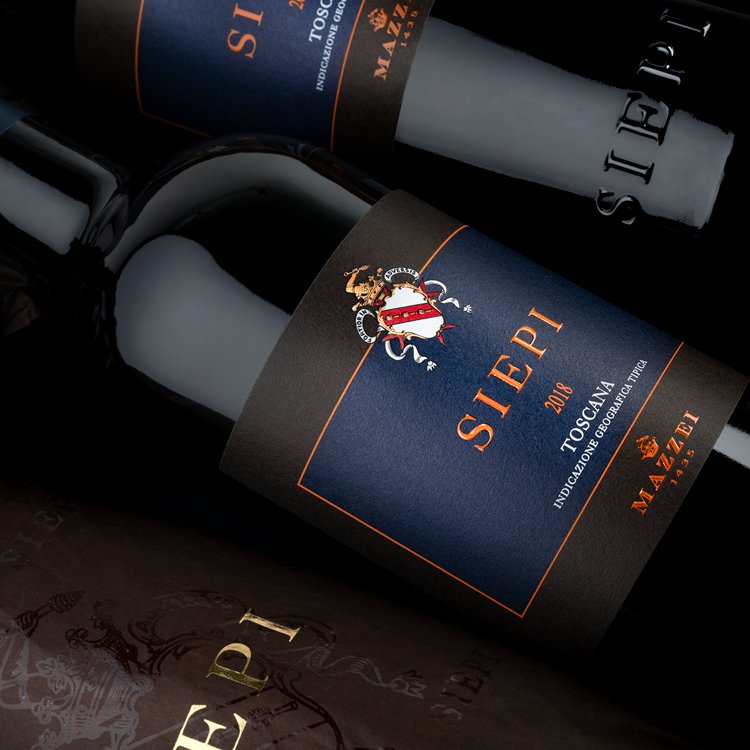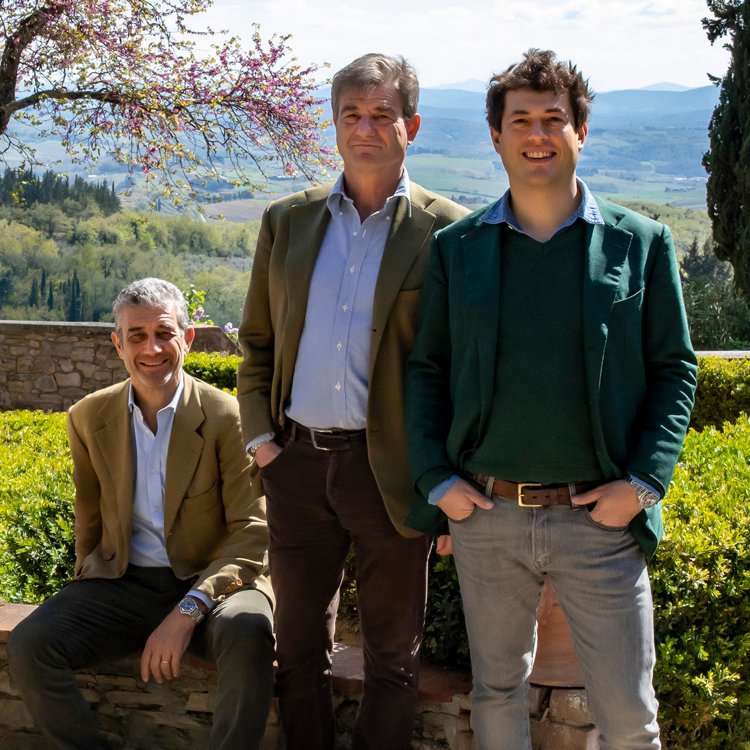✒ Siepi
If you ever needed proof as to why Italian wines are the current stars of the fine wine market, look no further than Siepi. Giovanni Mazzei recently came to London from Tuscany to show his 2019 vintage, which has been just released, alongside the 2018, 2017 and 2016 vintages over lunch at the pop-up Petersham Nursery restaurant “La Goccia” owned by his wife, Lara Boglione, at the recent Frieze Fair.
The Mazzei family have a unique place in wine history. In a document from 1398, kept in the Datini Archive in Prato, Ser Lapo Mazzei wrote, “On this day December 16th three florins, 26 soldi and 8 denari shall be given to Piero di Tino Riccio for 6 barrels of Chianti wine.” It was the first time the word “Chianti” was recorded. In 1435, Ser Lapo Mazzei’s granddaughter, Madonna Smeralda, married Piero da Fonterutoli, and the estate has been in the hands of the family ever since.
It is from this estate that Siepi is produced in the commune of Castellina in Chianti, surrounded by dense woodland. Marchese Cav. Lapo Mazzei, Giovanni’s grandfather, was inspired to blend Sangiovese and Merlot by the soils there, which are a mixture of alberese marl, limestone and Pliocene clays; the first vintage was produced in 1992. The Sangiovese for Siepi is sourced from two parcels on the estate, Vallone and Poggione, 3.1 hectares on south-facing slopes at 240 metres elevation. The Merlot was planted in the mid-1980s and comes from a 2.9-hectare parcel named Il Piano, on a southwest-facing slope; the clones were propagated by massal selection from vines growing on the estate since the 1970s. The blend remains 50% Sangiovese and 50% Merlot.
Siepi reminded me of Janus, the two-faced Roman god who was in charge of transition, as each vintage had a clear leaning to the varietal characteristics of one of its two grapes, despite the fact they were equally blended. We started with the 2016, a brave move as it was such a star, and hard to move on from. However, by only showing four wines over a perfectly matched menu, there was time to see how they developed in the glass. The 2019 Siepi is the second vintage to be released by the Place de Bordeaux. At around £90, it is clearly a serious collector’s wine, but it amused me to find, when I returned home, a quote from Ser Lapo Mazzei, who wrote to a friend in 1394, urging him to overcome his frugality: “Do not worry about the cost of that wine, even though it was expensive; its goodness revives you.” It’s still true, 600 years later.
2016 Siepi – Deep garnet in colour, highly perfumed, with generous juicy blackcurrants, red plums, and enticing wild herbs rising out of the glass; on the palate, an impression of power restrained, its rich velvet tannins gently gripping a core of dark fruit. Its elegant minerality balances and provides freshness, though what made it so unforgettable was the structure and length--it had that vinous rhythmic beat of all top wines, which does not fade and continues for ever. A classic, which like all great wines rose in the glass over the hours it was in front of me.
2017 Siepi – The 2017, in comparison to the 2016, was less demonstrative on the day. A core of crunchy redcurrants, red plum, tobacco notes, were all waiting to explode, but for now coiled, waiting, with a precise tension running through the wine. It opened up with the food, but I would wait a couple of years to see it relax into its large and impressive frame.
2018 Siepi – I loved this wine when I first tasted it (see Wines Worth Talking About), and on the second tasting I found it to be still just as impressive. This is Tuscany personified, with its moreish Sangiovese red fruit driving through the palate, the wild herbs of Tuscany giving freshness; it has grip, it has bite, but everything is controlled and lyrical, beautifully balanced. Power and elegance, drinking beautifully now (and that might be a problem, as it has a long future ahead).
2019 Siepi – The 2019 is destined to be a true classic. This is a rich, powerful wine full of explosive juicy black and red fruit, blueberries, bitter dark chocolate, and a hint of tobacco, but with a delightfully long finish full of Tuscan herbs. The tannins are refined and integrated, making it delicious to drink now. Utterly joyous, with its huge energy and drive--the depth of this wine is remarkable. We have excitement here, and while it is incredibly impressive now, this is one to also lay down, if possible, in magnums








Brian St Pierre takes a look at the latest crop of wine books, and picks out the ones he believes should be on every wine lover’s shelf